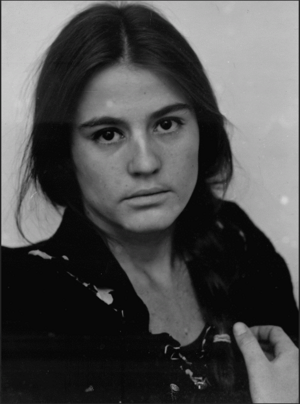Marja Vallila facts for kids
Quick facts for kids
Marja Vallila
|
|
|---|---|

Artist Marja Vallila
|
|
| Born | October 20, 1950 |
| Died | December 23, 2018 (aged 68) |
| Nationality | American |
| Occupation | Sculptor |
Marja Vallila (born October 20, 1950 – died December 23, 2018) was an amazing American artist. She was known for her paintings, ceramics, and sculptures.
Contents
About Marja Vallila
Early Life and Education
Marja Vallila was born in Prague, which is in Czechoslovakia. Her father was a diplomat from Finland. Her mother was from the Czech Republic. Marja moved around a lot when she was young. She lived in Geneva, Switzerland, and then in Finland.
Eventually, her family settled in Washington DC. There, she learned a fourth language! She went to Western High School. This school was later renamed the Duke Ellington School of the Arts.
Marja loved art and continued her studies. She earned a master's degree in fine arts from Cornell University. She also received a special grant called a Fulbright grant. This helped her to show her art in exhibitions.
Life as an Artist
Marja found a large warehouse in SoHo, Manhattan in New York City. It was big enough to be both her home and her art studio. She met and married another sculptor named James W. Buchman. Marja also became a professor and taught art at the University at Albany.
In 1992, Marja spent a year in France. She was an artist-in-residence at a place called Centre culturel de la Villedieu. This means she lived and worked there, focusing on her art.
Her Art Style
Marja's early sculptures were very large. She often made them for outdoor spaces. They were usually made of strong materials like steel. Sometimes she added granite, cement, or wood.
Later, she started making smaller metal sculptures. She would include everyday objects in her art. This made her pieces look very special and unique.
After visiting Deruta, Italy, Marja began working with ceramics. She used a special technique called slip-casting. This is often used for decorative items. But Marja used it in a new way for fine art. She combined ordinary objects with ceramics. Her art looked like layered, textured, and colorful collages. Art critics said her pieces looked like "amphibian-looking biomorphic creations." This means they looked like living things that could live in water and on land.
Later Life
As Marja's health got worse, she moved to Memphis, Tennessee. Even though she could not speak, she kept creating. She continued to work on her paintings and ceramic art.
Marja Vallila did something very kind. She gave her parents' old home in Červený Újezd, near Prague, to the community. This home was safe during wars because of a Finnish flag and a special sign. Now, it is used as a special education center.
Art Exhibitions
Marja Vallila's art was shown in many places. Here are some of her important solo exhibitions:
- Zabriskie Gallery (1977)
- Newark Museum (1979, 1991)
- Springfield Museum (1979)
- Seoul Arts Center (2001)
- U Prestenu Gallery (2001)
- Nancy Margolis Gallery (2000)
- Chodovska Tvrz, Czech Republic (2003)
- Tops Gallery, Memphis, Tennessee (2017)
Her work was also part of group shows. For example, it was in "Study in Materials" at Storm King Art Center in 1978. Her digital films about her sculptures were also shown in different theaters.
Art in Collections
Marja Vallila's sculptures are part of permanent collections. This means museums and other places own her art forever. People can visit these places to see her work.
- Everson Museum of Art, Syracuse, (NY): Gateway (sculpture made of wood, steel, and granite).
- Kohoutov, Ceramics school: Czech Republic.
- Herbert F. Johnson Museum of Art, Ithaca, (NY): Column No. 5 (sculpture made of wood, steel, stone, and concrete).
- John F. Kennedy International Airport, Jamaica, (New York): Elevated Plaza (sculpture made of steel and copper).
- Hampshire College Art Gallery, Amherst, (MA): Untitled (sculpture made of welded steel).
- Smith College Museum of Art , Northampton, (MA): Dancing Goober (sculpture made of ceramic and platinum).
See also
- Ceramic art
- Assemblage (art)

